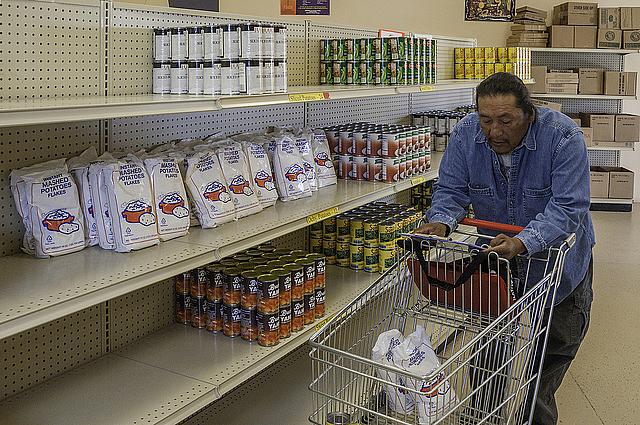Help or hindrance? The WIC program in Calif.’s Indian Country

For as healthy a reputation as California has in other parts of the U.S., we have a considerable health crisis on our hands.
The Golden State was ranked 16th overall in the 2015 America’s Health Rankings by the United Health Foundation. In heart disease and diabetes, the state ranks first and 7th respectively, according to the 2013 report from the California Department of Public Health, and hypertensive renal disease/essential hypertension round out the 10th place position on that list. What do these diseases have in common? Oftentimes, they can be traced back to family history, but increasingly diet is to blame, in part, for these ailments.
Recognizing the dire status our state is in, let us turn this lens toward to communities that are among the poorest: California Native Americans who reside on Rancherías, reservations and in urban settings. For decades, tribes have subsisted on the Commodity Foods Program, under the umbrella of the USDA. Under the program, tribes that have treaties which are recognized by the U.S. government are eligible for food distribution. These commodity food handouts are closely monitored and distributed by Individual Tribal Organizations, who are in charge of food distribution. The goods, usually canned and powdered items, are parceled out and provided to families; each issue may vary in size and content given the number of family members and their nutritional needs, as determined by the USDA. These commodity rations are often supplemented with traditional foods that have been gathered or harvested; subsistence hunting and fishing are very common in Indian communities across California.
Another source of nutrition is the Women, Infants, and Children program. Since 1974, the WIC program has provided assistance to low-income families across the U.S., and is a leading advocate for breastfeeding and offer frees programs and peer counseling for new mothers.
But just how valuable is the WIC program to Native families? Some of the foods provided are not indigenous to the American Indian diet. And what actually qualifies as a healthy food? Are the juices, vegetables, grains and fruits provided organic? What is the sugar content of the average meal provided by WIC? And how do children reared on these foods fare when compared against those raised on more traditional foods?
My research for the 2016 California Fellowship will explore what a number of the California tribes are doing to encourage healthier eating and how the WIC and food stamp programs might be helping or hindering their efforts.
This research is of critical importance, since American Indians/Alaska Natives are more than twice as likely to be told by a physician that they have diabetes as their non-Hispanic white counterparts. They also are almost twice as likely to die from diabetes as non-Hispanic whites. And in 2010, American Indians/Native Americans were 2.7 times more likely to be diagnosed with end stage renal disease than non-Hispanic whites.
Given the dismal state of affairs when it comes to the Native American/American Indian diet, my research will posit several questions: What are the implications of offering the WIC program to populations that experience extreme food insecurity and who happen to be lactose intolerant? Is the program a modern day perpetuation of the policy of limiting or making traditional food sources unavailable to Native communities? Given the strict guidelines, does the program help or hinder those in remote areas such as Rancherias or reservations? Do urban Indian populations experience the same phenomenon?
My reporting will reach out to Native American communities to find out from the source what is working and what needs to be changed.
[Photo by USDA via Flickr.]

